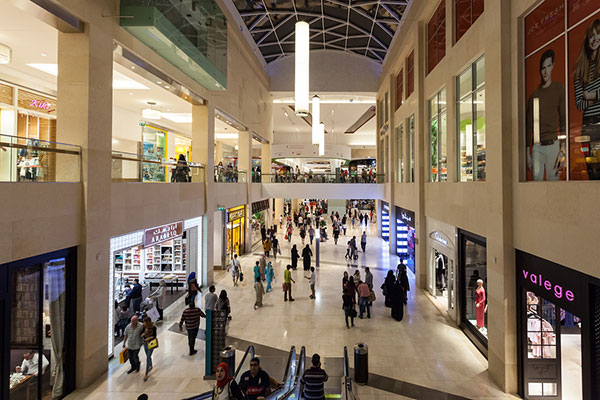
UAE continues to enjoy strong growth
in the luxury goods sector.
Mideast luxury goods sector to see big growth
BEIRUT, August 22, 2016
The Middle East represents a big opportunity for luxury brands, said an industry expert, adding that luxury malls in Abu Dhabi and Dubai in the UAE have helped put these cities on the map for the industry.
“Well-established big-name brands perform well in the region, and tourism is a major driver of sales in Dubai,” added Herve Ballantyne, partner and consumer and industrial products leader at Deloitte in the Middle East.
“Although the region is likely to feel the impact of political unrest as well as global economic uncertainty, but further growth is expected overall,” he explained, commenting on the annual report entitled “Global Powers of Luxury Goods 2016 Disciplined innovation” from Deloitte, a leading provider of audit, tax, consulting, and financial advisory services.
"As the Kingdom of Saudi Arabia seeks to diversify its oil-based economy, retail is a sector that is likely to benefit given the expected growth in religious tourists over the next decade and ongoing private sector planned investments such as the recent announcement that the Majid Al Futtaim group will be adding approximately 112,000 sq m of retail space in Riyadh,” he added.
The global luxury goods sector is expected to grow more slowly in 2016, at a rate many retailers may find disappointing, according to the report.
The growth rate is slowing in important markets such as China and Russia, although some markets continue to perform well and there are pockets of opportunity across the globe. India and Mexico for example are growing quickly, and the Middle East offers further growth potential.
The report examines and lists the 100 largest luxury goods companies globally, based on the consolidated sales of luxury goods in financial year 2014 (which we define as financial years ending within the 12 months to 30 June 2015). It also provides an outlook on the global economy; an analysis of merger and acquisition activity in the industry and discusses the key forces shaping the luxury market.
The world’s 100 largest luxury goods companies generated sales of $222 billion in financial year 2014, 3.6 per cent higher year-on-year. The average luxury goods annual sales for a Top 100 company is now $2.2 billion.
“There is a shift in the luxury path-to-purchase,” said Ira Kalish, chief economist for Deloitte Global. “Empowered by social networks and digital devices, luxury goods consumers are dictating increasingly when, where and how they engage with luxury brands. They have become both critics and creators, demanding a more personalized luxury experience, and expect to be given the opportunity to shape the products and services they consume.”
Key findings:
• Discipline by design: luxury’s new normal – The luxury goods sector has now passed the mid-point of the ‘decade of change.’ The first half was characterized by the Chinese consumer and the explosion in the use of digital technology. The second half of the decade is expected to be characterized by discipline. The external environment is likely to change in a number of crucial areas: an evolution in consumer buying behaviours; the merging of channels and business model complexity; an increase in international travel; the growing importance of the millennial consumer; and the continued impact of the global economy. All of these factors create opportunities for the luxury goods sector.
• Demand for luxury goods still growing profitably – Sales for the world's 100 largest luxury goods companies continued to grow despite economic challenges, although the rate of growth was less than in previous years. Profit margins were higher than the previous year and the polarization of company performance was greater, with more high performers achieving double-digit luxury goods sales growth and profit margins, and also more companies experiencing double-digit sales decline.
• Italy is once again the leading luxury goods country in terms of number of companies – With 29 companies in the Top 100 it has more than double the number based in the US, which has the second-largest number. However, Italian companies account for only 17 per cent of luxury goods sales in the Top 100 – these predominantly family-owned Italian companies are much smaller, with average luxury goods size of $1.3 billion, compared to $3.1 billion for US companies. – TradeArabia News Service







